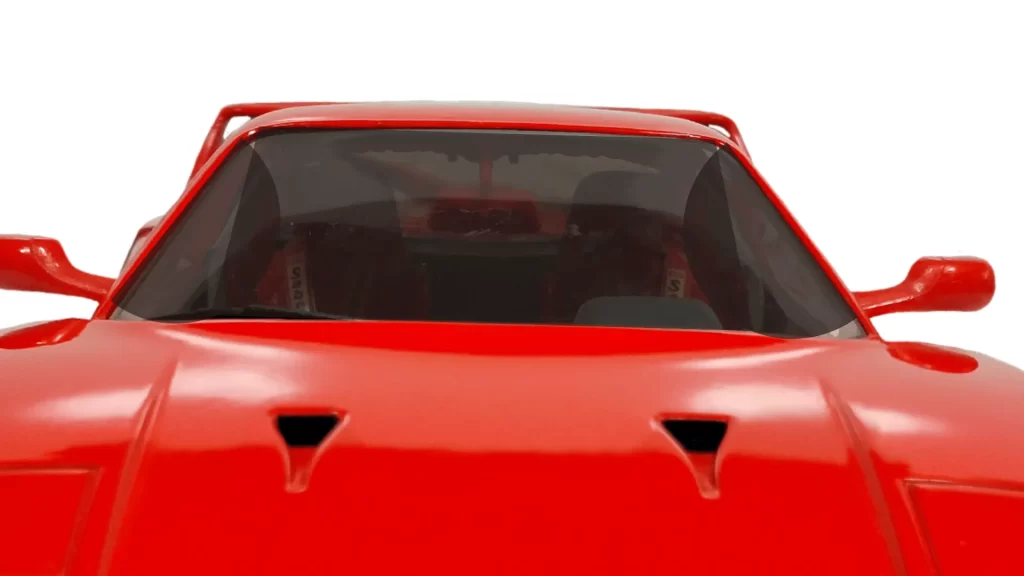Window tinting is a popular modification for many car owners, as it offers a variety of benefits, such as reduced glare, increased privacy, and improved energy efficiency. For choosing the right level of tint, it’s important to understand how it’s measured and what your local laws allow.
One common way to measure window tint is by its visible light transmittance (VLT) percentage. This refers to the amount of light that can pass through the tinted window. For example, a 43% VLT tint means that 43% of the incoming light may pass through, while the remaining 57% is blocked. This level of tint is considered relatively light and is often allowed on the side and rear windows of vehicles in most states.
However, tint laws vary from state to state and may also differ based on the type of window. For example, some states have stricter laws for the tint on the front windshield, while others may allow a higher VLT percentage on the rear windows. It’s important to check the laws in your area before applying any window tint to ensure you’re in compliance.
Besides VLT percentage, it’s also important to consider other factors when choosing the right window tint for your vehicle. These may include the type of film used, the reflectivity of the tint, and the color of the tint. By weighing these factors, you can choose a window tint that meets your needs and complies with the tinting laws in your area.
What does 43% tint look like?
When viewed from the outside, a 43% window tint will appear relatively light, but still noticeable. It will allow a significant amount of light to pass through the window, but will still block a substantial portion of incoming light. The exact appearance of the tint will depend on the color and type of film used, as well as the level of reflectivity. Some tints may have a more reflective or mirrored appearance, while others may be more subtle and allow for better visibility through the window. From the inside, a 43% tint will appear relatively similar to the outside, but may appear slightly darker because of the blocking of incoming light.

Car Window Tint Percentage Visualization Tool
Select a percentage value from 1 to 100 to see how dark it is:
Selected Percentage:
Use the basic window tint visualization tool above to see how dark 43% tint is. Set the value to 43 and the tool will simulate the tint percentage for the most common black tinting film. However, for other tint colors, use our advanced tint percentage visualization tool.
Can you see through 43% tint at night?
While a 43% window tint will allow a significant amount of light to pass through during the day, it may be slightly difficult to see through at night in comparison. This is because the tint will block some of the incoming light, which can make it harder to see out of the window in low light conditions. However, the level of visibility through a tinted window at night will also depend on the type and color of film used, as well as the reflectivity of the tint. Some tints may allow for better visibility at night than others, especially those that reduce glare and reflections. It's worth considering these factors when choosing a tint to ensure you have adequate visibility at all times.
How much does a 43% tint cost?
The cost of a window tint with 43% tint will vary depending on several factors, including the size of the windows, the type and color of film used, and the location of the installation. On average, you can expect to pay between $100 and $400 for a 43% window tint, with the cost typically being higher for larger windows or more complex installations. Some factors that may affect the cost of your tint include the type of film used (such as ceramic or metallic), the color of the tint, and any additional features or services included in the installation (such as a scratch-resistant coating or lifetime warranty). It's a good idea to shop around and get quotes from multiple installers to find the best price for your specific needs.
Is 43% tint worth it?
Whether a 43% window tint is worth it will depend on your specific needs and preferences. If you're looking for a moderate level of privacy and glare reduction without making your windows too dark, a 43% tint may be a good choice. It will still allow a significant amount of light to pass through, which can be beneficial for visibility during the day and for maintaining a bright and open feel inside the vehicle. However, if you're looking for more privacy or glare reduction, a darker tint may be a better option. Additionally, it's worth considering the cost of the tint and whether it aligns with your budget. Ultimately, whether to tint your windows and what level of tint to use is personal and will depend on your individual needs and preferences.
Conclusion
If you're considering applying a 43% window tint to your car, it's important to know that this level of tint allows 43% of incoming light to pass through the window, while blocking the remaining 57%. While many states, including Michigan, Connecticut, Utah, Louisiana, Hawaii, Idaho, Illinois, Kansas, Maine, Maryland, Massachusetts, Missouri, Nebraska, Nevada, New Hampshire, North Carolina, Oregon, South Dakota, Tennessee, West Virginia, and Kentucky allow this percentage of tint on any window of your vehicle, it's generally only permitted on the side and rear windows in other states. Before you proceed with tinting your windows, be sure to check the laws in your area to ensure you're in compliance.

